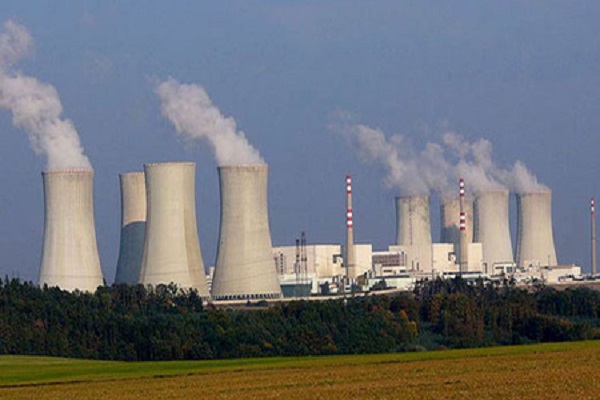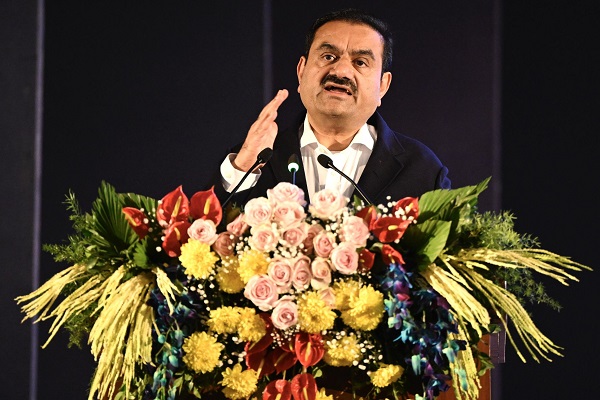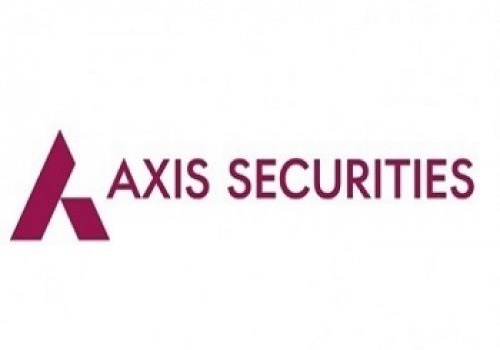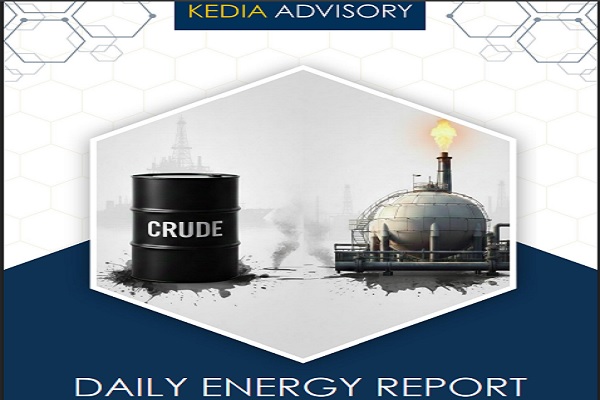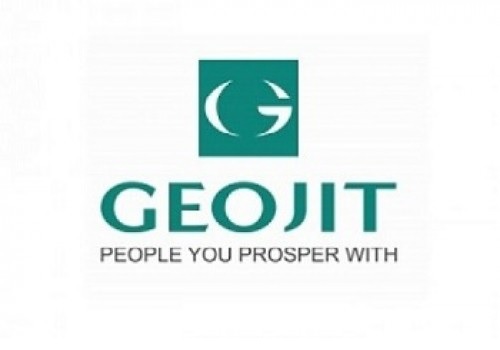Silver trading range for the day is 95850-98760 - Kedia Advisory

Gold
Gold futures declined by 0.83% to settle at 95,143, pressured by reduced safe-haven demand amid renewed optimism surrounding US-EU trade negotiations. Market sentiment improved after the European Union agreed to expedite trade discussions with the United States, following President Donald Trump's threat—later postponed—to impose a 50% tariff on European imports. From a global trade perspective, Switzerland's gold imports from the US surged to 63 metric tons in April—the highest since at least 2012—after the exclusion of precious metals from US tariffs. However, Swiss gold exports overall fell 31% month-on-month, with shipments to the US dropping significantly from 103.3 tons to 12.7 tons. In India, physical gold demand remained weak due to high global prices and a depreciating rupee, prompting dealers to offer discounts of up to $49 per ounce, up from $34 last week. In contrast, premiums held steady in China at $16–$30 per ounce, indicating robust demand. According to the World Gold Council, global gold demand rose 1% year-on-year in Q1 2025 to 1,206 metric tons, driven by a 170% jump in investment demand, although jewelry consumption dropped 21% due to elevated prices. Technically, the market is under long liquidation, with open interest falling by 24.78% to 6,718. Gold now finds support at 94,695; a break below may lead to 94,245. On the upside, resistance is at 95,830, and a move above could push prices toward 96,515.
Trading Ideas:
* Gold trading range for the day is 94245-96515.
* Gold slips as safe-haven demand wanes on US-EU trade optimism
* The EU said it agreed to speed up negotiations with the US to avoid a transatlantic trade war.
* Gold imports to Switzerland from US jumped to the highest monthly level since at least 2012 in April.
Silver
Silver prices declined by 0.54% to settle at 97,475, pressured by an improvement in risk sentiment after U.S. President Donald Trump postponed proposed 50% tariffs on European Union imports. The move followed a phone call with EU chief Ursula von der Leyen, which reignited trade talks and reduced immediate geopolitical tensions. While this weighed on silver’s safe-haven appeal, expectations of potential interest rate cuts by the U.S. Federal Reserve—dependent on tariff policy outcomes—could support the metal in the medium term. On the industrial front, silver remains fundamentally strong. China’s rapid solar and wind power expansion, with nearly 1,500 GW capacity and a notable 60 GW increase in photovoltaic installations in Q1, underscores robust demand for silver in green energy technologies. The Silver Institute projects global silver demand to remain stable in 2025 at 1.20 billion ounces, with industrial fabrication forecast to grow by 3%, surpassing 700 million ounces for the first time. Despite a narrowing supply-demand gap, the silver market is projected to record its fifth consecutive annual deficit in 2025, with a shortfall of 117.6 million ounces. Supply is expected to rise 2%, while demand falls 1%. Technically, silver is under fresh selling pressure, as open interest rose by 3.29% to 17,939. Support is seen at 96,660, and a break below may test 95,850. Resistance lies at 98,115, with potential to test 98,760 on a breakout.
Trading Ideas:
* Silver trading range for the day is 95850-98760.
* Silver falls as risk sentiment lifts after Trump delays EU tariff decision
* Fed officials Kashkari and Williams expected to provide further insights on monetary policy
* New orders for manufactured goods in the US plunged by 6.3% from the previous month to $296.3 billion in April of 2025.
Crude oil
Crude oil prices fell by 1.22% to settle at 5,191 amid expectations that OPEC+ may increase production in the upcoming meeting. This sentiment weighed on market participants as another meeting scheduled for Saturday is anticipated to confirm a further output hike for July. Additionally, U.S. President Donald Trump's extension of trade talks with the European Union to July 9 helped ease immediate tariff concerns that could have otherwise reduced fuel demand. Meanwhile, uncertainty surrounding a potential Iran-U.S. deal continues to inject a degree of bullish sentiment into the market. On the supply side, U.S. Energy Information Administration (EIA) data revealed a 1.3 million barrel increase in crude oil inventories, contrary to expectations of a draw. Gasoline and distillate inventories also rose, further pressuring prices. However, a decline of 457,000 barrels at the Cushing delivery hub offered some support. The International Energy Agency (IEA) projected that global oil demand growth will slow to 650,000 barrels per day for the rest of 2025 due to economic headwinds and rising electric vehicle sales. Still, the IEA revised its full-year demand growth forecast slightly upward to 740,000 bpd, reflecting improved economic outlooks and lower oil prices stimulating consumption. From a technical standpoint, crude oil is under fresh selling pressure, marked by a 17.45% increase in open interest, indicating new short positions being added. Support is now seen at 5,137, with a break below potentially leading to 5,082. On the upside, resistance lies at 5,273, and a move above that could push prices toward 5,354.
Trading Ideas:
* Crudeoil trading range for the day is 5082-5354.
* Crude oil dropped on expectations OPEC+ will decide to increase output.
* However, another meeting on Saturday is likely to agree to a further accelerated oil output hike for July.
* Russian Deputy PM Alexander Novak noted that the group had yet to discuss the output increase officially.
Natural gas
Natural gas prices edged higher by 0.93% to settle at 315.9, supported by a combination of falling output, increased short-term demand, and expectations of a hotter-than-normal summer. These conditions are likely to increase gas consumption by power generators to meet air conditioning needs. The U.S. Commodity Futures Trading Commission reported that speculators trimmed their net long positions for the first time in three weeks, bringing them to their lowest level since April, indicating a cautious market sentiment despite bullish fundamentals. Production in the Lower 48 U.S. states declined to 105.0 billion cubic feet per day (bcfd) in May from a record 105.8 bcfd in April. At the same time, weather forecasts project continued above-normal temperatures across much of the country through mid-June, which could further bolster demand. U.S. utilities added 120 bcf to storage for the week ending May 16, surpassing market expectations and marking the largest weekly build since September 2022. According to the U.S. Energy Information Administration (EIA), both production and consumption are expected to hit record highs in 2025, with dry gas output forecast at 104.9 bcfd and consumption rising to 91.3 bcfd. Technically, the market is under fresh buying pressure, with a notable 18.56% increase in open interest, suggesting growing bullish sentiment. Support lies at 310, with further downside potential to 304, while resistance is seen at 322.1, and a breakout above could push prices toward 328.2.
Trading Ideas:
* Naturalgas trading range for the day is 304-328.2.
* Natural gas edged up amid a drop in output so far this month, forecasts for more demand.
* Speculators cut their net long futures and options positions for the first time in three weeks to their lowest since April.
* Gas stockpiles were currently around 4% above the five-year (2020-2024) average.
Copper
Copper prices settled lower by 0.27% at 864, weighed down by a broader risk-off sentiment stemming from global economic and trade uncertainties. Market participants remained cautious ahead of US Senate deliberations on President Trump’s ambitious tax and spending bill, which is expected to sharply inflate national debt levels. Adding to the geopolitical unease, Trump’s decision to postpone a 50% tariff on EU imports until July 9 has introduced volatility, prompting China and the EU to strengthen their trade ties in response to rising US protectionism. On the supply front, the ICSG has significantly increased its 2025 surplus forecast to 300,000 tonnes, attributing the rise to strong ore production in South America. Despite this, inventories on major exchanges show a mixed picture. The Shanghai Futures Exchange recorded a 9% decline in stocks to 98,671 tons, while LME stocks dropped 8% to 164,725 tons. Meanwhile, COMEX inventories surged 3% this week to 174,607 tons—an 87% rise since February—suggesting a shift in global trade flows as traders eye U.S. price premiums amid looming tariff threats. Refined copper market data from the ICSG showed a surplus of 61,000 metric tons in February, down from 90,000 tons in January, with global output at 2.20 million metric tons and consumption at 2.14 million metric tons. Technically, the copper market is undergoing long liquidation, with open interest falling 1.93% to 6,456. Prices saw a 2.35 drop, and immediate support lies at 861.2, below which a test of 858.3 is likely, while resistance is seen at 867.1, with a potential upside to 870.1.
Trading Ideas:
* Copper trading range for the day is 858.3-870.1.
* Copper fell as risk-off sentiment gripped markets amid global economic and trade uncertainties.
* Investors turned cautious ahead of US Senate debates on President Trump’s expansive tax and spending bill.
* ICSG doubled its forecast for a 2025 market surplus to nearly 300,000 tonnes.
Zinc
Zinc prices slipped by 0.31% to 256.85, weighed down by a stronger U.S. dollar and lingering uncertainty around U.S. trade policies. The recent decision by President Donald Trump to withdraw the immediate imposition of a 50% tariff on European Union imports has created a window for renewed trade dialogue. Simultaneously, while the U.S. and China have agreed to a 90-day tariff truce, ambiguity remains over the long-term trajectory of their trade relationship, casting a shadow over global commodity markets. On the supply side, zinc fundamentals remain mixed. While zinc inventories in Shanghai Futures Exchange-monitored warehouses dropped by 4.9% from last Friday, suggesting tightening spot supply, the broader outlook reflects potential supply growth. Smelter maintenance has temporarily limited supply, supporting prices, but rising zinc concentrate treatment charges (TC) and the introduction of new smelting capacity hint at a possible oversupply in the near future. In April 2025, China’s refined zinc production rose 1.6% month-on-month and 10% year-on-year. However, cumulative production for January to April rose only 0.3% YoY, missing expectations. Globally, the zinc market surplus declined to 23,700 metric tons in March from 75,900 tons in February, according to the ILZSG, signaling some tightening. Technically, zinc is under fresh selling pressure with a 9.8% increase in open interest to 2,475, suggesting new short positions. Immediate support lies at 255.4, with further downside potential to 254, while resistance is seen at 258 and 259.2.
Trading Ideas:
* Zinc trading range for the day is 254-259.2.
* Zinc dropped pressured by a firmer dollar and uncertainty over U.S. tariffs.
* China's industrial profits picked up pace in April, official data showed.
* Zinc inventories in warehouses monitored by SHFE fell 4.9% from last Friday, the exchange said.
Aluminium
Aluminium prices climbed 0.8% to settle at 238.9, supported by a rise in alumina prices amid tightening supply conditions and cost pressures. The market found support from production cuts due to refinery maintenance and environmental regulations, especially in key Chinese provinces like Shanxi and Guizhou. These disruptions have tightened the alumina spot market, raising input costs and underpinning aluminium prices. According to the World Bureau of Metal Statistics (WBMS), global primary aluminium production in March stood at 6.1609 million tons, outpacing consumption of 5.8836 million tons, leading to a surplus of 277,300 tons. For the first quarter of 2025, production totaled 17.9783 million tons against consumption of 17.4396 million tons, resulting in a cumulative surplus of 538,700 tons. In April, the International Aluminium Institute (IAI) reported global primary output at 6.033 million tons, up 2.2% YoY. China, the world’s top aluminium producer, increased its output by 4.2% YoY in April to 3.75 million metric tons, with cumulative output for January–April rising 3.4% YoY to 14.79 million metric tons. Meanwhile, China’s aluminium exports grew 17% in the first ten months, reaching 5.5 million tons. Rising stockpiles at Japan’s key ports also indicate robust global supply, with inventories rising 3.4% MoM to 320,300 metric tons. Technically, the market is under fresh buying pressure, as open interest rose by 4.85% to 4,305 contracts. Support is seen at 236.4, with further downside potential to 233.7. Resistance is pegged at 240.6, and a break above could push prices toward 242.1.
Trading Ideas:
* Aluminium trading range for the day is 233.7-242.1.
* Aluminium gained supported by rise in alumina prices are driven by a tightening supply.
* Global primary aluminium production was 6.1609 million tons in March, resulting in a surplus of 277,300 tons - WBMS
* China cut benchmark lending rates for the first time since October, and major state banks lowered deposit rates to aid the economy.
Cottoncandy
Cottoncandy prices edged higher by 0.13% to settle at 54,670, supported by concerns over tightening domestic supply and lower crop projections. The Cotton Association of India (CAI) has revised its estimate for India’s 2024-25 cotton output downward by 4 lakh bales to 291.30 lakh bales (170 kg each), mainly due to reduced production in Maharashtra. This revision follows inputs from state associations as of March end. The total cotton supply up to March is estimated at 306.83 lakh bales, which includes 25 lakh bales of imports and 30.19 lakh bales of opening stock. Mill-held stocks stand at 27 lakh bales, while the remainder is distributed among the Cotton Corporation of India (CCI), Maharashtra Federation, and the trade. Exports for the season are estimated at 16 lakh bales—down sharply from the previous year’s 28.36 lakh bales. Imports, however, are projected to more than double to 33 lakh bales as domestic output falters. About 25 lakh bales had already arrived at ports by March end. On the global front, U.S. export forecasts were reduced by 100,000 bales, with ending stocks increasing accordingly. Global production is expected to fall slightly by 69,000 bales due to lower outputs in several countries, though partially offset by increased Chinese production. Technically, the market is under short covering, with a 30% drop in open interest to 70 contracts while prices rose 70. Support is now seen at 54,510 and resistance at 54,910, with further upside possible to 55,150.
Trading Ideas:
* Cottoncandy trading range for the day is 54350-55150.
* Cotton prices gained as CAI expects a shrinkage in crop.
* Cotton exports for the 2024-25 season are pegged at 16 lakh bales, lower by 12.36 lakh bales over previous year’s 28.36 lakh bales.
* The closing stock for 2024-25 season at end of September 2025 is estimated lower at 23.49 lakh bales from same period last year’s 30.19 lakh bales. I
* In Rajkot, a major spot market, the price ended at 25884.4 Rupees dropped by -0.32 percent.
Turmeric
Turmeric futures slipped by 0.72% to settle at 13,712, pressured by a sharp rise in arrivals and subdued export enquiries. Daily arrivals nearly doubled to 57,500 quintals, up from 29,860 quintals in the previous session, weighing on prices. However, the downside appears limited due to persistent concerns over lower production and quality issues. Despite an increase in the turmeric cultivation area to 3.30 lakh hectares (up 10% year-on-year), production is not expected to rise proportionately due to untimely rains impacting yield, especially in key growing regions like Nanded, where reports of small rhizomes and crop rot are prevalent. Market sentiment remains supported by strong demand for fresh, high-quality produce at markets like Duggirala, where newer stock is commanding a premium over older inventory. Daily trade volumes are robust at 1,000–1,200 bags, and with approximately 50%–55% of the new crop already traded, market activity is expected to remain strong through June. Export data reflects mixed signals. Turmeric exports rose by 8.83% in the April–March 2025 period to 176,325.34 tonnes compared to the previous year. March 2025 saw a 13.41% year-on-year decline in exports to 15,095.79 tonnes, though this marked a 20.39% increase over February’s figures. Technically, the market is under long liquidation as open interest declined by 2.22% to 15,445. Turmeric has support at 13,644, and a drop below this could push prices to 13,574. Resistance is seen at 13,806, with a move above potentially testing 13,898.
Trading Ideas:
* Turmeric trading range for the day is 13574-13898.
* Turmeric dropped due to increased arrivals and owing to weak export enquiries.
* However downside seen limited amid persistent concerns about lower production estimates.
* Yields expected 10–15% lower; Nanded region hit by crop rot and small rhizomes
* In Nizamabad, a major spot market, the price ended at 14294.6 Rupees dropped by -0.65 percent.
Jeera
Jeera futures slipped by 0.22% to settle at 20,680, weighed down by weak domestic buying and muted export demand. The retreat in prices follows the end of the retail season and a lull in overseas demand, as traders prefer to rely on existing inventories. Additionally, comfortable stock availability and increased arrivals have contributed to the bearish sentiment. Total arrivals in major mandis rose to 32,900 bags, up from 28,000 bags in the previous session, exerting further pressure on the market. The delayed onset of cumin sowing in Gujarat and Rajasthan due to unfavourable weather initially raised concerns, but current crop conditions and improved sowing are expected to maintain production at levels similar to last year. Despite low demand, farmers are reportedly holding around 20 lakh bags of jeera, of which only 3–4 lakh bags are likely to be traded before the season ends. This suggests a significant carry-forward stock of approximately 16 lakh bags, further dampening the near-term price outlook. On the trade front, jeera exports from April to March 2025 surged by 39.63% to 2,12,502.49 tonnes compared to the previous year. However, March exports declined by 46.03% year-on-year, even though they rose 33.40% over February. Jeera imports plummeted 93.20% year-on-year to 1,194.29 tonnes, reflecting abundant domestic availability. Technically, the market is under long liquidation, as open interest fell by 4.53% to 6,327. Jeera now finds support at 20,580, and a drop below could lead to 20,460. Resistance is seen at 20,770, and a break above this may push prices toward 20,840.
Trading Ideas:
* Jeera trading range for the day is 20460-20840.
* Jeera dropped due to lower buying and weak export demand.
* The current season is expected to have similar production levels as last year due to better crop conditions.
* Jeera exports during Apr - Mar 2025, rose by 39.63 percent at 212502.49 tonnes compared Apr - Mar 2024.
* In Unjha, a major spot market, the price ended at 21119.15 Rupees dropped by -0.41 percent.
Views express by all participants are for information & academic purpose only. Kindly read disclaimer before referring below views
